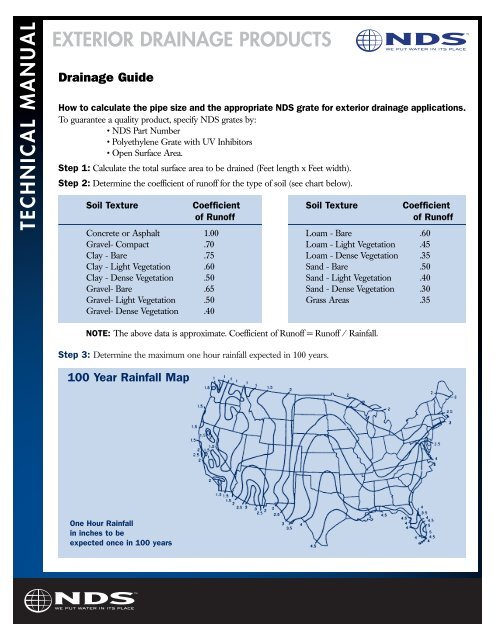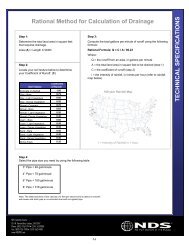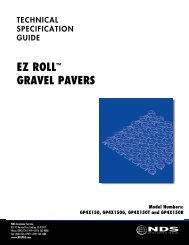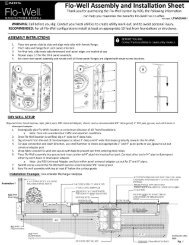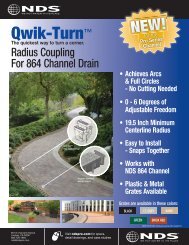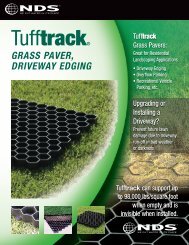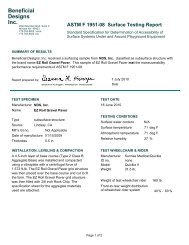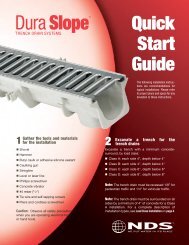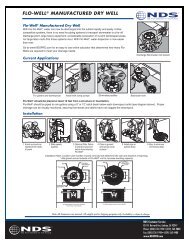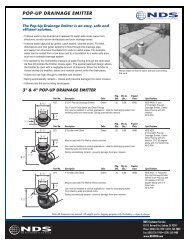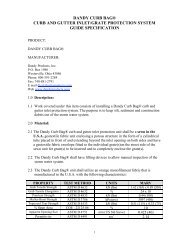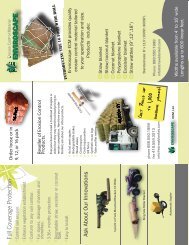Tech Manual - Drainage Solutions, Inc.
Tech Manual - Drainage Solutions, Inc.
Tech Manual - Drainage Solutions, Inc.
Create successful ePaper yourself
Turn your PDF publications into a flip-book with our unique Google optimized e-Paper software.
TECHNICAL MANUAL<br />
EXTERIOR DRAINAGE PRODUCTS<br />
<strong>Drainage</strong> Guide<br />
How to calculate the pipe size and the appropriate NDS grate for exterior drainage applications.<br />
To guarantee a quality product, specify NDS grates by:<br />
• NDS Part Number<br />
• Polyethylene Grate with UV Inhibitors<br />
• Open Surface Area.<br />
Step 1: Calculate the total surface area to be drained (Feet length x Feet width).<br />
Step 2: Determine the coefficient of runoff for the type of soil (see chart below).<br />
Soil Texture Coefficient Soil Texture Coefficient<br />
of Runoff<br />
of Runoff<br />
Concrete or Asphalt 1.00 Loam - Bare .60<br />
Gravel- Compact .70 Loam - Light Vegetation .45<br />
Clay - Bare .75 Loam - Dense Vegetation .35<br />
Clay - Light Vegetation .60 Sand - Bare .50<br />
Clay - Dense Vegetation .50 Sand - Light Vegetation .40<br />
Gravel- Bare .65 Sand - Dense Vegetation .30<br />
Gravel- Light Vegetation .50 Grass Areas .35<br />
Gravel- Dense Vegetation .40<br />
NOTE: The above data is approximate. Coefficient of Runoff = Runoff / Rainfall.<br />
Step 3: Determine the maximum one hour rainfall expected in 100 years.<br />
100 Year Rainfall Map<br />
One Hour Rainfall<br />
in inches to be<br />
expected once in 100 years


